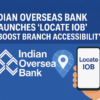Highlights from Capgemini World Retail Banking Report 2024 that surveyed 250 bank CXOs:

Banks anticipate a challenging 2024, including rising funding costs and reduced lending volumes. Consequently, they are reassessing their cost base, and evaluating closing unprofitable business lines, exiting non-core markets and streamlining operations through workforce optimization.
Intelligent Transformation
As applications multiply, scalable benefits will require balancing customer experience enhancements and optimizing operational efficiency. Bank employees survey indicates they focus nearly 70% of their time on operational activities, leaving only 30% for customer interactions. Banks can strike a new, more results-driven balance by unlocking the full potential of Al and generative Al across diverse use cases. Three pivotal processes emerge as prime candidates for intelligent transformation:
1. Workforce productivity tools through copilots
2. Document gathering, processing, and validating
3. Call center customer centricity and efficiency.
Top Concerns
The 250 banking CXOs ranked the high cost of capital, a decline in deposit volumes, rising provisions for non-performing loans, falling lending volumes, and increasing cost-to-income ratios as their top concerns. Bank CXOs in 2024 will be navigating an anxiety-inducing triad of cost, competition, and customer churn.

Gen Z
Executives who participated in the CXO survey said Gen Z individuals, aged 18-26 years, account for only 21% of their bank’s total customer base. Moreover, only 9% of bank executives prioritize targeting and acquiring Gen Z customers. The bankers aim to prioritize customers who can swiftly contribute to the bank’s economic margin. Within a fiercely competitive market, investing in younger demographics entails potential risks. Should banks aim to target this segment, the approach largely involves open, collaborative, and white-label partnerships with Gen Z-related brands, rather than making direct investments in the Gen Z segment.
Friction in KYC, Onboarding
According to 64% of bank employees, completing the KYC process for a customer can take up to 3 days. For mid-size banks, the process might extend longer. The KYC process costs banks approximately $80 per customer, with an average onboarding cost of $128 per customer, including the KYC expenses. As a result, a cumbersome documentation process and subpar onboarding experiences lead to prospects abandoning their applications: an estimated 18% of customers leave the application process.
Over 70% of prospects who abandoned their account applications cite inadequate support and guidance as primary reasons. Half of the prospects said the documentation process was lengthy, time-consuming, repetitive, and lacked progress clarity. Merely 4% claim to be able open an account within a day, while 34% require up to 5 days. The survey found that the journey extends to 6-10 days for 44% of customers and reaches 10-15 days for the remaining 18%.
Capgemini analysis determined that banks can optimize up to 66% of the time spent on operational, documentation, and compliance-related activities by leveraging Al-powered intelligent transformation and generative Al co-pilots. Intelligent document processing platforms reduce costs, effort, and risk by leveraging cognitive capabilities, including Al and ML, to automate tasks such as document categorization and data extraction.
Contact Center, Chatbot
61% of bank customers contacted agents because they were unhappy with chatbot resolutions. Yet, almost 22% said they rarely engage with human agents, finding chatbots sufficient, and the remaining 17% said they distrusted chatbots and preferred direct contact with human agents.
However, the survey also indicated growth in chatbot acceptance among younger demographics. A quarter of millennials and Gen Z individuals liked chatbots compared with only 17% of baby boomers and members of Gen X. Around 25% of Gen X and baby boomers said they regularly contacted human agents for help compared with only 10% of Gen Z and 14% of millennials.
Back End
The CXO survey revealed that allocating 56% of the technology budget to front-end transformation compared to 44% on back-end improvements and automation was a prevalent trend across regions and banks. The discrepancy in investment between front-end and back-end digital areas might stem from a desire to meet immediate customer needs and improve CX visible at the front-end, while sometimes neglecting the foundational upgrades necessary to support these advancements.
Banks often prioritize investments in front-end digital technologies due to their immediate impact on customer experience and engagement. This focus on front-end solutions allows banks to enhance user interactions, streamline processes, and create an appealing user interface.
However, investment in back-end digital infrastructure, though equally crucial, might not always be as visible or immediately impactful from a customer’s perspective. Back-end digital infrastructure involves systems, data management, security measures, and integration capabilities that support the bank’s overall operations. These upgrades and enhancements are fundamental for ensuring data security, operational efficiency, scalability, and seamless integration of various systems within the bank’s ecosystem.

Tech Roadmap
On technology, 70% of bank CXOs plan to increase investment in digital transformation by up to 10% in 2024, despite maintaining a strong focus on cost discipline. Enhancing data management capabilities and modernizing legacy data systems take precedence, but concurrently, banks will migrate core functions to the cloud to establish a nimble, economical foundation. Cloud and advanced data analytics are pivotal for banks seeking to orchestrate value-added services within lucrative open banking ecosystems. Artificial intelligence, including generative Al, is the center-piece of intelligent transformation.
Gen AI Roadmap
North American banks have taken the lead at a regional level, with approximately 13% of banks already establishing an enterprise-level roadmap for Al and generative Al. European banks are also quickly catching up, with nearly 38% of banks setting up Al roadmaps for specific lines of business. Conversely, APAC banks are trailing behind, with 39% of banks in the early stage of roadmap development and only 12% directing their efforts toward specific lines of business.
Read more:
Africa: Private Capital loses Momentum

Amalgamating Process Standardization & Thought Liberalization








